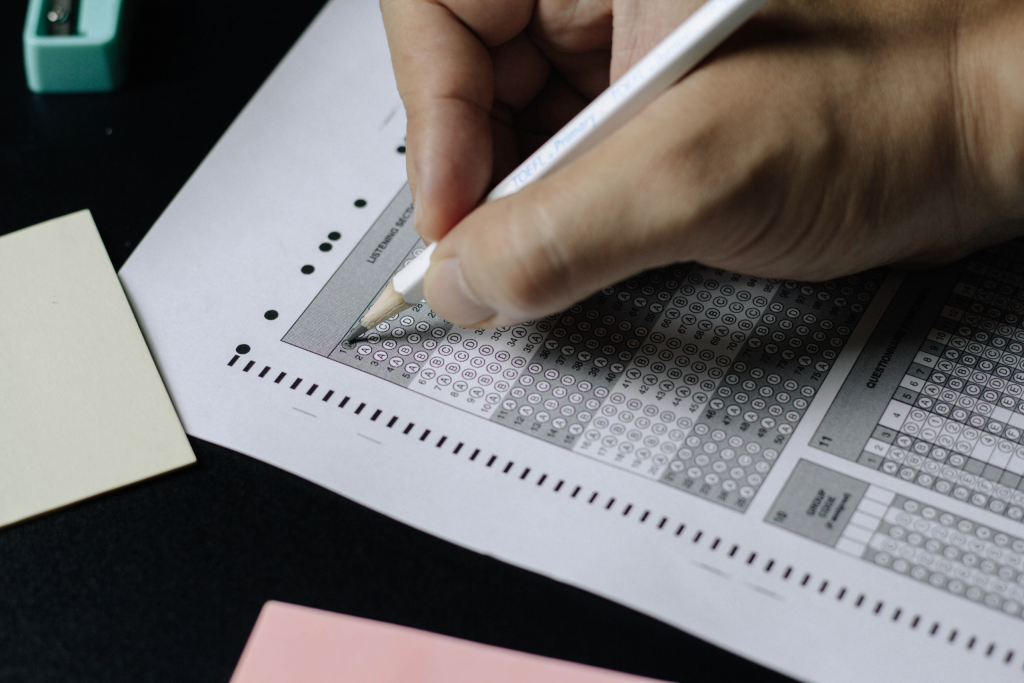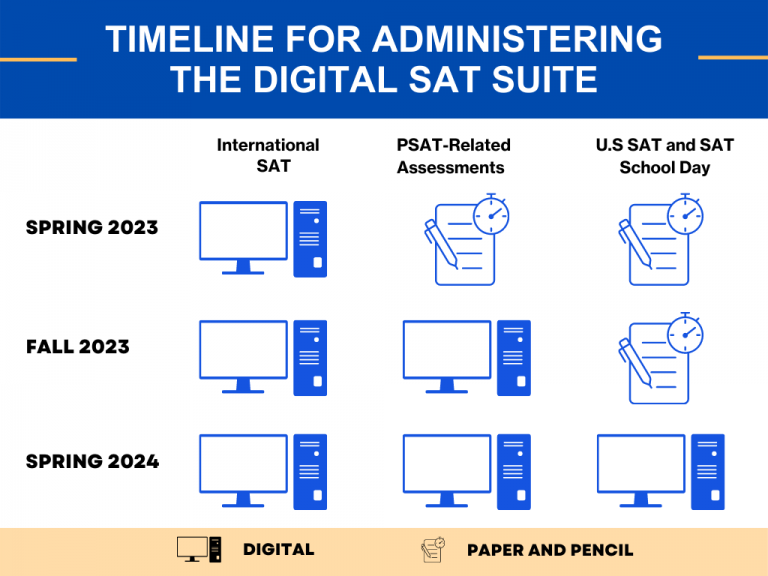Digital SAT® & PSAT: Everything You Need To Know

The College Board has decided to switch to a digital SAT® format in order to prevent its SAS exams from being leaked. The following revisions have been made to the test:
- Shortened by about an hour,
- Implementation of adaptive scoring,
- Approved calculators are now allowed for all Math questions,
- The Reading and Writing sections of the SAT® have been combined into a single section.
The digital SAT® was planned for some time, but as of 1/25/22, it has been made official.
The first set of digital SAT® will be available in time for the March 2023 international examinations, according to the College Board (and beyond). The digital SAT® promises to be more secure than paper-based exams, which is the underlying reason for the shift, according to the College Board. The paper-based exams have experienced significant issues with worldwide exam security, including test leaks, cheating scandals, score delays, and canceled scores.
Do you want to improve your chances of getting into a top-tier university? Schedule your consultation with Tokyo Academics today!
There won’t be a paper exam alternative anywhere after the Fall 2023 Digital PSATs, March 2024 US Digital SAT®, and March 2024 School-Day SAT® (also digital), with the exception of students with accommodations who will still have the option of paper-based testing.
In some senses, the digital SAT® has already come. The College Board has secretly been giving a “digital SAT® pilot” exam to a small group of students since late 2021. In exchange, the students earned $50 or $100 gift cards but did not receive an official SAT® score.
From April 2022, however, digital SAT® pilot test-takers — you must be invited to take the test and then accepted — are given official SAT® scores and can choose to keep or cancel the scores after being viewed.
You can choose (whether your digital SAT® score) “will become an official College Board score by the end of August 2022,” the College Board stated in an email. Test takers also can choose between a $50/$100 gift card or a free exam registration (worth $55) for the March or May 2022 paper-based SAT®.
Students should take advantage of this chance even if they plan to take the digital SAT® in 2023 or later. Those who take the new digital SAT® pilot will now have the option to delete or cancel their results after the fact.
The sole caveat? Students must also agree to either take the March 2022 or May 2022 paper-based SAT® to get an official score on the April 2022-starting digital SAT® pilot program, presumably in order to validate or confirm their scores on the digital exam.

Highlights include:
- The digital SAT® is 3 hours, 15 minutes on the present version of the test, or 3 hours, 35 minutes if you include the not scored fifth “experimental” component. The time will be reduced to 2 hours, 24 minutes, including the 10-minute break. Test dates will increase, and test times will become more flexible. It will be acceptable for students to bring their own laptops or tablets. (Those who request them in advance will have access to loaner devices.)
- The exam needs internet access and will resume where you left off if your computer freezes, crashes, loses power, or loses connection to the internet.
- The digital SAT® cannot be taken at home; it must be taken at a high school near you or another authorized College Board testing location.
- Due to the shortened length of the digital SAT®, there will only be two sections: a combined Reading and Writing section and a Math section, each lasting around an hour. A student’s performance on the first module of questions will decide the difficulty level (easy, medium, hard) of their second module of the same type, much like the GRE. Each section will consist of two modules and use a “section-level adaptive structure.”
- Early reports from digital SAT® pilot test-takers indicate that each of the two Reading and Writing modules consists of 27 questions and lasts 32 minutes and each of the two Math modules consists of 22 questions and last 35 minutes. The total testing time will be (64 + 70) minutes or 134 minutes. Additionally, there is one 10-minute break following the second reading and writing session.
- It will take days instead of weeks for scores to be released. There will also be choices to Mark for Review, Annotate, and Zoom, as well as a countdown timer and a math reference page with popular formulas (similar to the current SAT®).
- All math questions will allow calculator use, unlike the current SAT®, which has a Math no Calculator section 3 and a Math with Calculator section 4. You can use the on-screen calculator from Desmos (iOS, Android, or PC) or bring your own authorized calculator. The “grid-in” or student-produced answers will be up to five digits and contain negatives.
The majority of the exam’s substance will not change, but it appears that the digital SAT® will test more subjects and abilities (including limits of functions, poetry, and synthesizing information from notes) while eliminating or de-emphasizing some question types. By the fall of this year, the College Board has pledged to release the first official digital SAT® study guides and practice exams (2022).
Additional math topics tested will include proportions, functions, systems of equations, geometry, coordinate geometry, number properties, and parabolas.
- Nearly every student will encounter a unique set of questions on their digital SAT® thanks to the marvels of adaptive testing, making cheating, test leaks, and answer sharing much more challenging.
- The existing Reading and Writing part will change to shorter excerpts from a wider variety of sources, including paragraph-style sections, where only one question is associated with each piece, as opposed to the original five lengthy passages with 10 or 11 questions each.
The SAT® has traditionally changed exam formats roughly every ten years. The test was changed in 2005 to a 2400-point exam, then again in 2015 to return to 1600, and now the major change to a digital-only version has been scheduled for 2023–2024.
Given the abundance of practice exams available for the paper-based SAT® (68 official SAT® exams and counting) and the scarcity of study materials available for the digital exam, there’s a high probability that there will be a rush of test-takers for the current paper-based before the format changes.
In addition, many students will still prefer the paper-based exam as it is frequently easier to take a paper test than a computer one. The 3-hour, paper-based SAT® is not just easier on the eyes but perhaps easier overall than spending two continuous hours staring at a computer screen.
Another reason to avoid the unknown and take the paper-based SAT® is the expected technical issues when implementing the digital SAT®, similar to those experienced during the “computer-based” ACT.
SAT® is a trademark owned by the College Board, which is not affiliated with, and does not endorse Tokyo Academics.

